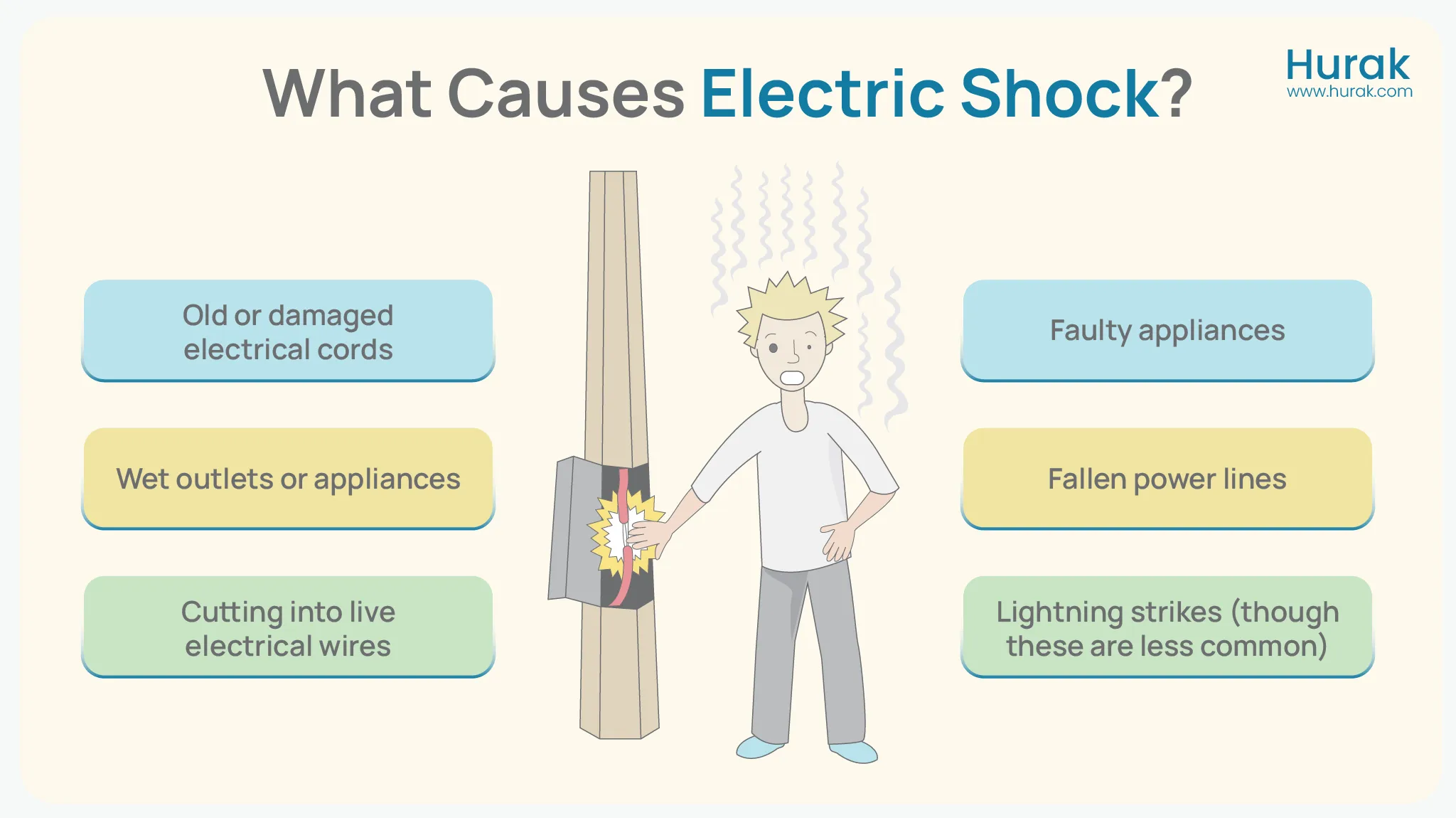Electricity is everywhere from the plugs in your walls to the power lines above. And while it’s a modern convenience, it can also be dangerous if you’re not careful. Here’s a breakdown of what electric shock is, how it can affect you, and what to do if it happens.
What Is Electric Shock?
Electric shock happens when electricity touches or travels through your body. It can be mild, like when you accidentally touch a faulty plug, or serious, like contact with a downed power line. Fatal electric shocks are called electrocutions.
The danger level depends on the voltage. Higher voltage means more electricity and greater risk. But don’t underestimate low-voltage shocks- these can still cause internal injuries that aren’t obvious right away. If you or someone else experiences an electric shock, always seek medical attention, no matter how minor it seems.
How Often Do Electric Shocks Happen?
Believe it or not, electric shocks are fairly common. Every year, about 30,000 non-fatal electric injuries happen in the U.S. Around 20% of these involve kids, often from chewing cords or sticking objects into outlets.
Tragically, around 1,000 people die from electric shock every year in the U.S., with about 400 of those deaths linked to high-voltage sources. And while rare, lightning strikes cause between 50 and 300 deaths annually.
Symptoms of Electric Shock
Electric shocks don’t always leave visible signs. Some symptoms you may notice include:
- Loss of consciousness.
- Tingling or numbness.
- Muscle spasms.
- Weak or irregular heartbeat.
- Burns, especially where the electricity entered or exited.
- Breathing problems.
- Chest or abdominal pain.
- Seizures or headaches.
- Vision or hearing issues.
Children, in particular, may show burned lips if they chew on electrical cords. Even if someone seems fine, they could have internal injuries, so it’s critical to see a doctor.
What Causes Electric Shock?

Electric shocks can be caused by many things, including:
- Old or damaged electrical cords.
- Wet outlets or appliances.
- Cutting into live electrical wires.
- Faulty appliances.
- Fallen power lines.
- Lightning strikes (though these are less common).
Potential Complications of Electric Shock
Electric shock injuries can range from mild to life-threatening. Some complications include:
- Infections (the most common reason for deaths after electric injuries).
- Irregular heartbeat or cardiac arrest.
- Respiratory failure, where breathing stops.
- Burns and trauma from being thrown during the shock.
- Memory loss or personality changes.
- Mental health issues, such as anxiety or depression.
How Do Doctors Treat Electric Shock?
When you arrive at the hospital, medical teams will check for damage to your heart, muscles, bones, or brain. They may run tests like:
- EKG (Electrocardiogram): Monitors your heart.
- Blood Tests/Urinalysis: Checks for muscle damage.
- Imaging (X-rays, CT scans, or MRI screening): Looks for broken bones or other injuries.
Depending on your injuries, treatment may include:
- Pain medication.
- IV fluids.
- Burn treatments (ointments or skin grafts for more serious burns).

Want to learn more about Electric Shocks? Our First Aid courses offer complete training to help you handle critical situations. Whether you want to improve your skills or workplace safety, these courses help build confidence and expertise. View our Emergency First Aid at Work (EFAW) and Level 3 First Aid at Work courses. These courses meet the UK legal requirements and help you keep people safe.
Can Electric Shock Be Prevented?
Yes! You can reduce the risk of electric shock by following these safety tips:
- Ensure all electrical work is handled by a certified professional.
- Install safety switches and test them regularly.
- Keep appliances away from water.
- Don’t use cords that are damaged or frayed.
- Follow safety instructions for power tools.
- Use protective gear (like rubber gloves) if working with electricity.
What’s the Outlook for Electric Shock Injuries?
The severity of electric shock injuries varies, but high-voltage shocks are more likely to cause serious complications. Even low-voltage shocks can be life-threatening, depending on the situation.
Survival chances are lower if someone:
- Has a cardiac arrest during the shock.
- Suffers from extensive burns.
- Develops an infection.
Even with successful treatment, some people may face long-term issues like anxiety, depression, or other mental health challenges.
When Should You See a Doctor?
- Minor shocks with no burns: Visit a doctor within 48 hours.
- Shocks with burns: Head to the emergency room.
- High-voltage shocks: Call 911 or go to the ER immediately.
Frequently Asked Questions
What’s the difference between shock and electrocution?
- Shock means injury from electricity.
- Electrocution is fatal.
Can a shock from a household plug kill you?
It’s rare, but possible. Standard U.S. outlets (120 volts) usually aren’t fatal, but deaths have been reported with voltages as low as 42 volts.
Can a shock kill you later?
Yes. Complications like infections or heart problems can develop after the shock. Quick medical care can reduce these risks.
Understanding the risks and symptoms of electric shock could save your life or someone else’s. Always prioritize safety and seek medical help when needed.




